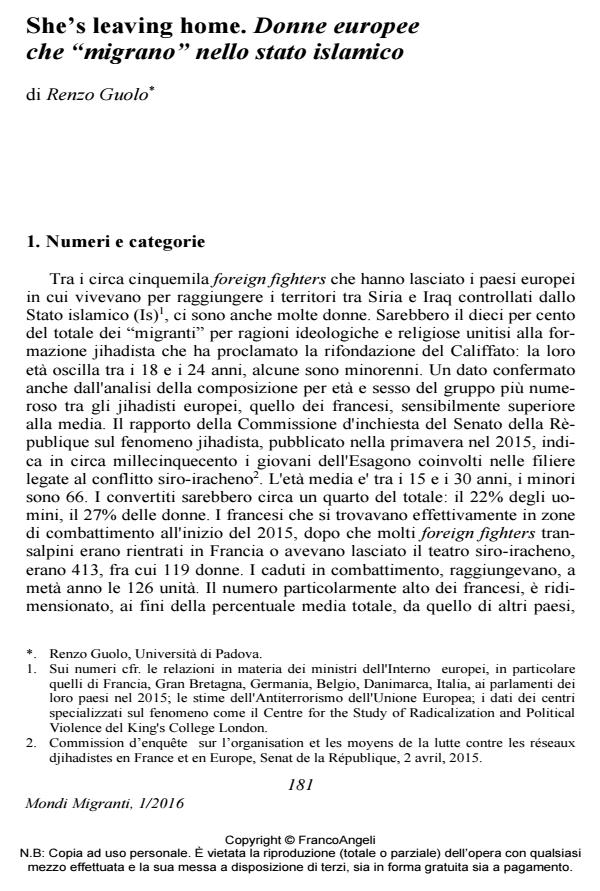She’s leaving home. Women who "migrate" to the Islamic State
Journal title MONDI MIGRANTI
Author/s Renzo Guolo
Publishing Year 2016 Issue 2016/1
Language Italian Pages 16 P. 181-196 File size 62 KB
DOI 10.3280/MM2016-001010
DOI is like a bar code for intellectual property: to have more infomation
click here
Below, you can see the article first page
If you want to buy this article in PDF format, you can do it, following the instructions to buy download credits

FrancoAngeli is member of Publishers International Linking Association, Inc (PILA), a not-for-profit association which run the CrossRef service enabling links to and from online scholarly content.
About 10 percent of European foreign fighters are women. What drives them to "migrate" to the Islamic State? By and large, women share some of the reasons which have prompted their "brothers" to walk the same path: the rejection of the stigma against Muslims in Europe, particularly when xenophobia is identified with Islamophobia by political actors; the belief that the umma, the community of believers, is under the attack of the West and should be defended; the desire to contribute by all means, including the sacrifice of one’s own life, to build a state in which sharia is fully operative; the desire to forge their identity according to the canons of Islamic precepts; the aspiration to fight the jihad. In this experience, however, women will be assigned the traditional role of domestic and family care.
Keywords: Identity, women, Islamic state, religion, radicalization
Renzo Guolo, She’s leaving home. Donne europee che "migrano" nello stato islamico in "MONDI MIGRANTI" 1/2016, pp 181-196, DOI: 10.3280/MM2016-001010